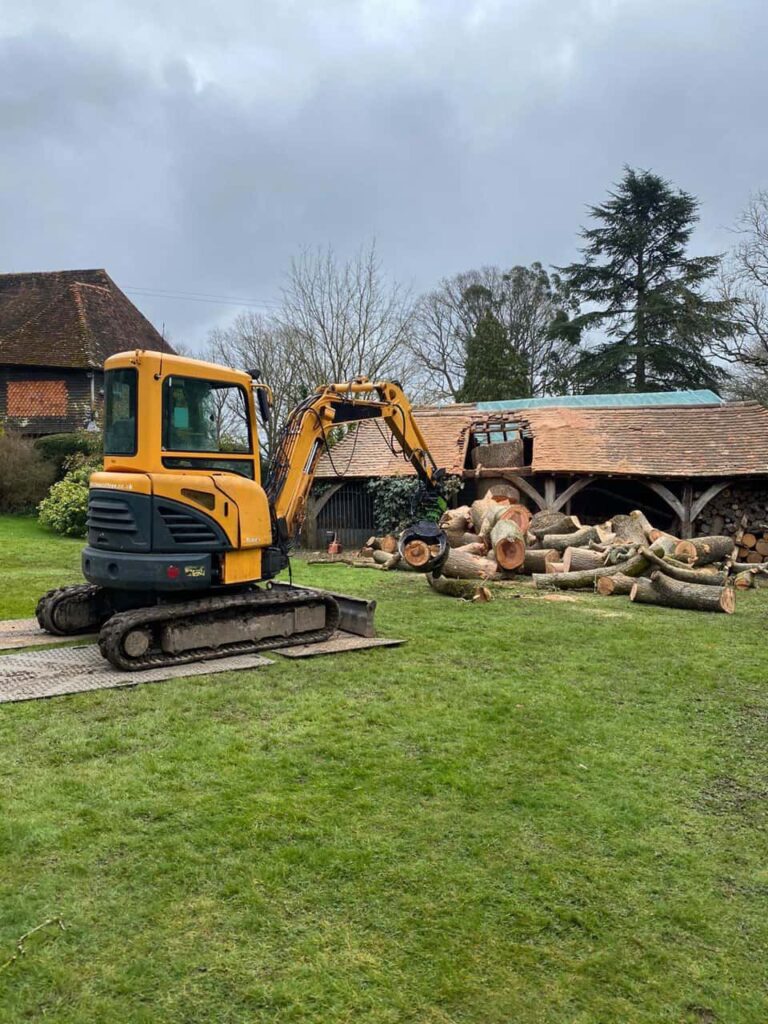Tree Reshaping for Fruit Production: Maximising Yields
Introduction: Fruit-bearing trees are a valuable addition to any garden or orchard. To ensure a bountiful harvest of delicious fruits, it’s essential to understand the significance of proper tree reshaping. Cranfield Tree Surgeons explores the art of tree reshaping for fruit production and how it can help you maximise your yields.
1. Pruning for Light Penetration:
One of the primary goals in reshaping fruit trees is to allow ample sunlight to reach all parts of the tree. Sunlight is crucial for photosynthesis, which is the process that converts sunlight into energy, enabling fruit production. Proper pruning techniques, such as thinning branches and removing excess growth, help ensure sunlight reaches the inner branches and lower canopy.
2. Promoting Airflow:
Good air circulation around the tree is vital to prevent the development of fungal diseases and improve pollination. Tree reshaping involves thinning out dense branches and removing dead or diseased wood. This practice allows air to circulate freely through the canopy, reducing the risk of fungal infections and ensuring pollinators can reach the blossoms.
3. Creating a Strong Framework:
A well-shaped fruit tree with a strong central leader and evenly spaced branches provides a stable framework for fruit production. Tree reshaping techniques can help train the tree to grow in the desired shape, ensuring that branches are adequately spaced and supported. A robust framework reduces the risk of branches breaking under the weight of fruit.
4. Correcting Structural Issues:
Tree reshaping is an opportunity to correct any structural issues hindering fruit production. This includes removing crossing branches, water sprouts, and any growth that competes with the main branches for nutrients. Addressing these issues improves the tree’s overall health and fruit-bearing capacity.
5. Managing Tree Height:
Controlling the height of fruit trees is essential for easy maintenance and harvesting. Tree reshaping allows you to manage the tree’s height by selectively removing branches or limbs that have grown too tall. This ensures that the tree remains accessible and that fruits are within reach when it’s time to harvest.
6. Encouraging Fruit Spur Development:
Certain fruit trees, such as apple and pear trees, produce fruit on short, stubby branches called spurs. Pruning and reshaping techniques can encourage the formation of these spurs, leading to more prolific fruit production. By promoting the growth of spurs, you can increase the number of fruit-bearing branches.
Conclusion: Tree reshaping for fruit production combines art and science. When done correctly, it can significantly enhance the yield and quality of fruits from your trees. Proper pruning for light penetration, promoting airflow, creating a strong framework, correcting structural issues, managing tree height, and encouraging fruit spur development are key aspects of successful fruit tree reshaping.
Call us on: 01234 860 988
Click here to find out more about Cranfield Tree Surgeons
Click here to complete our contact form and see how we can help with your tree’s needs.

